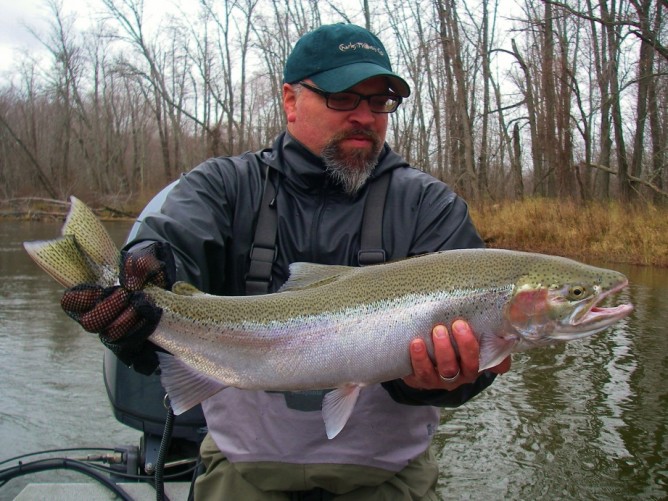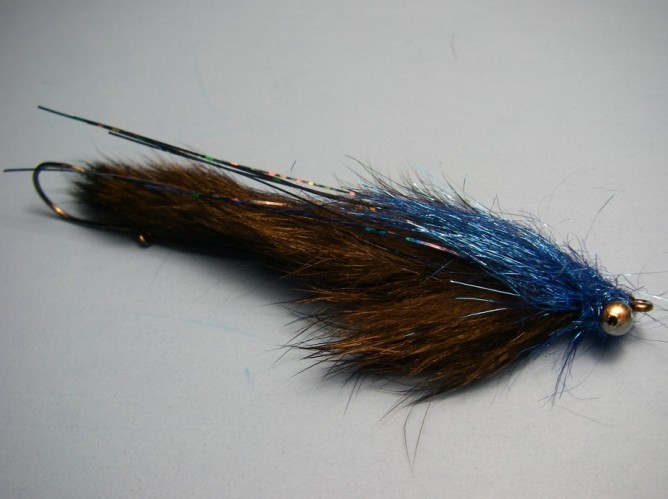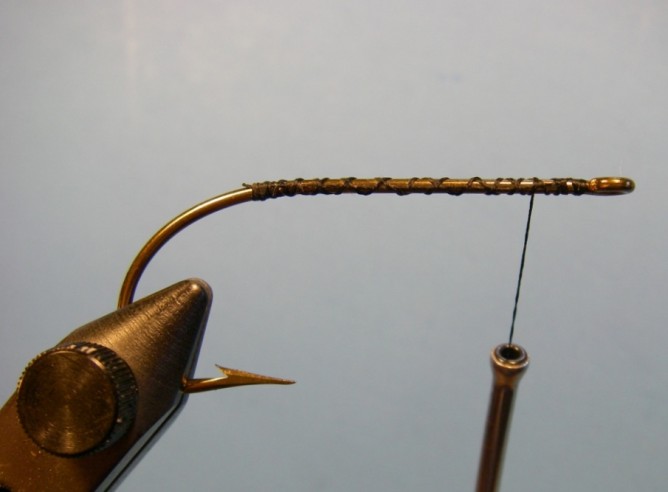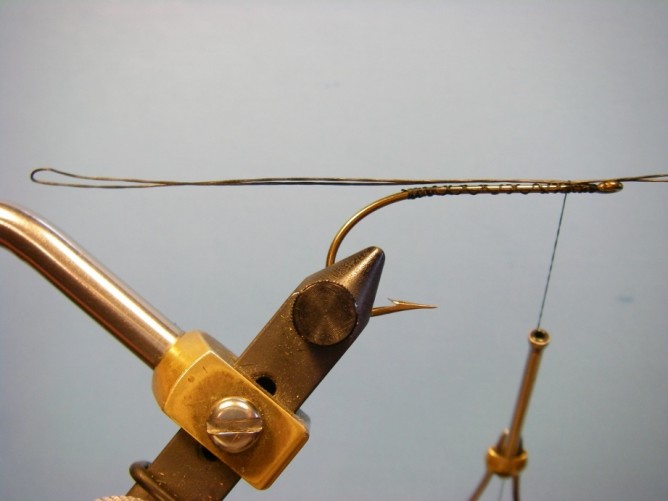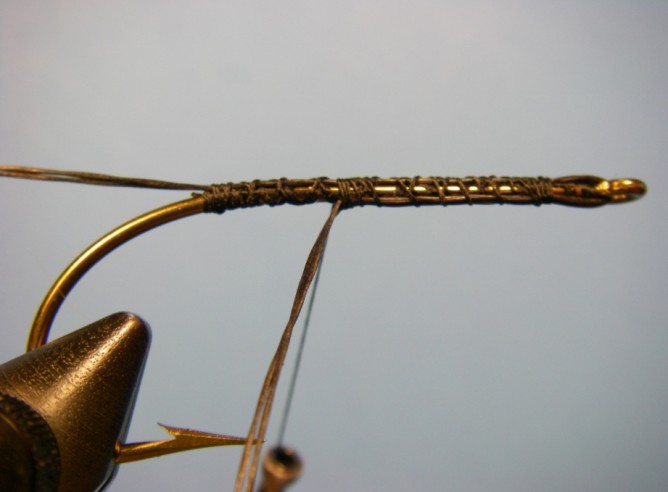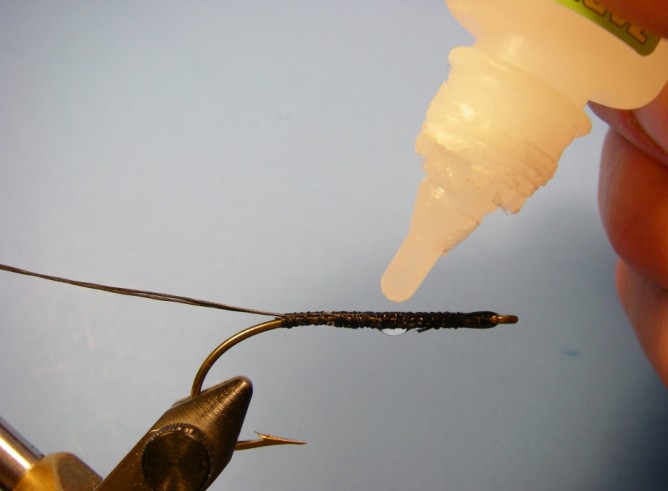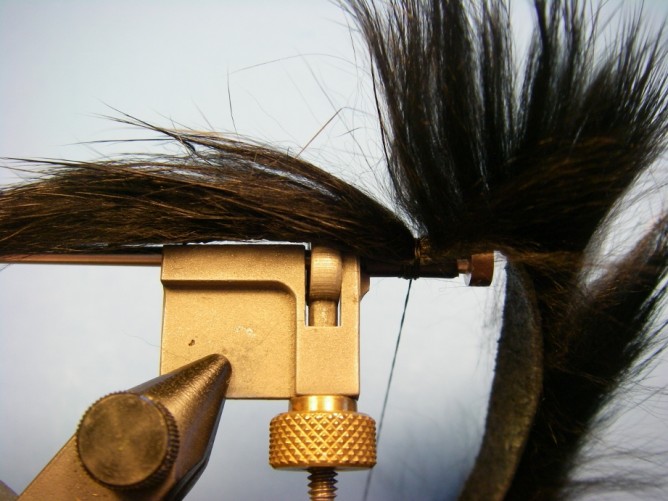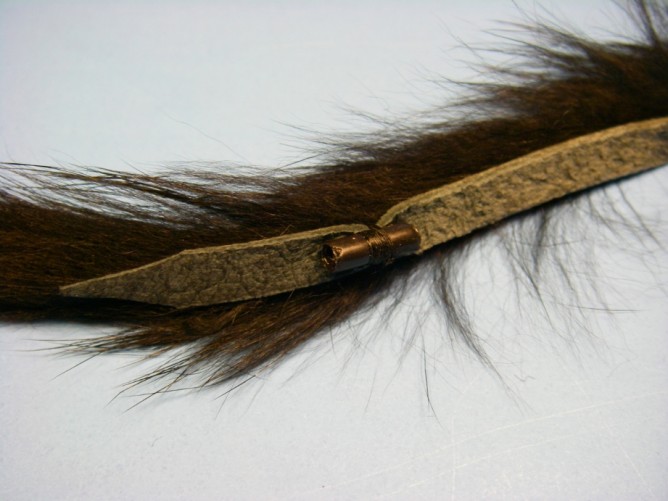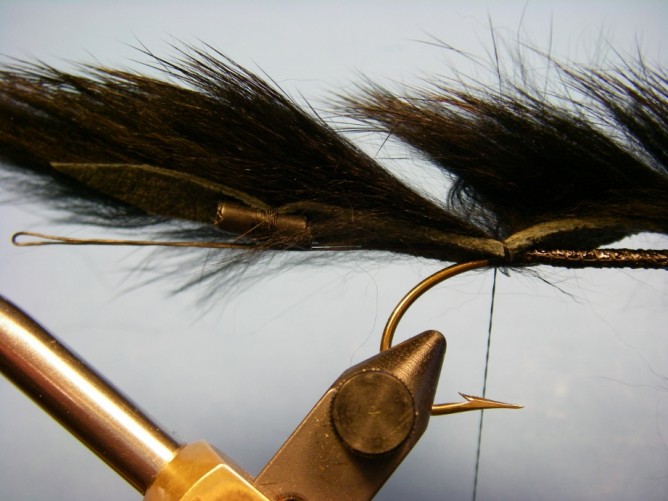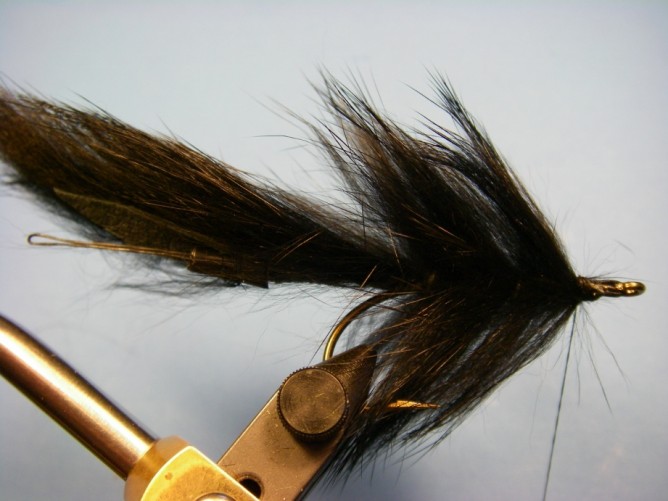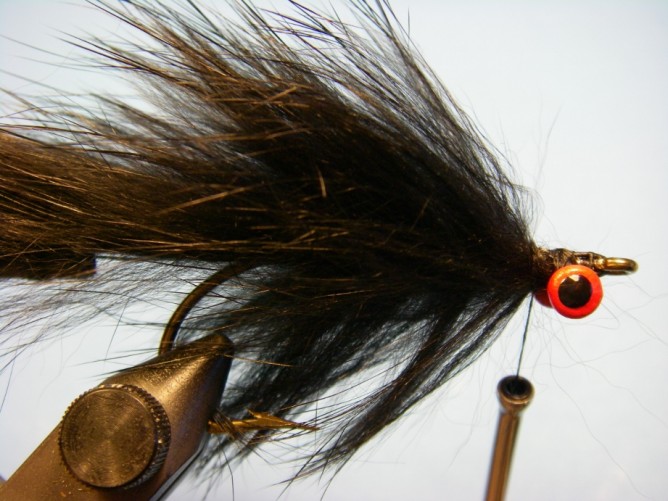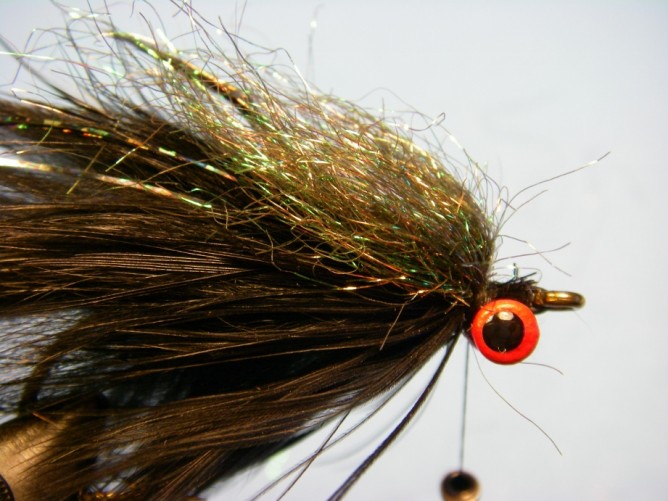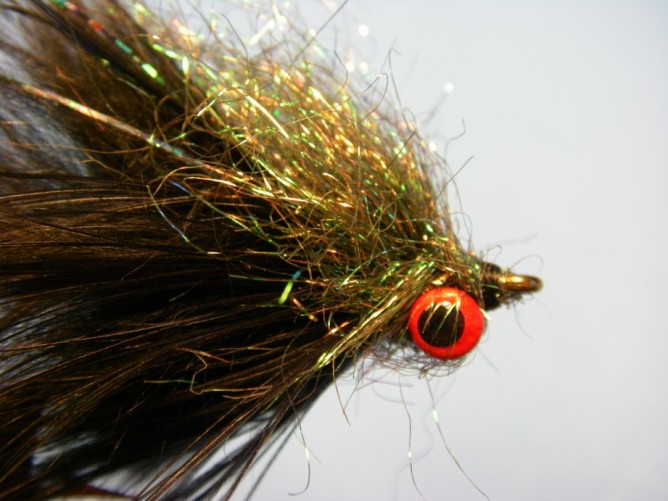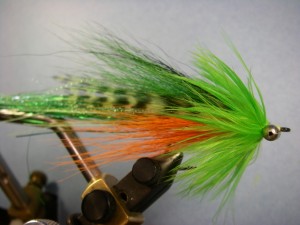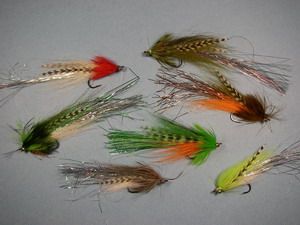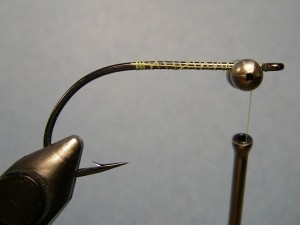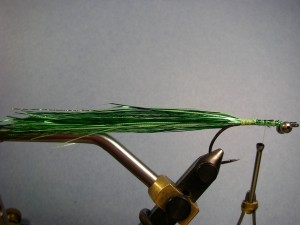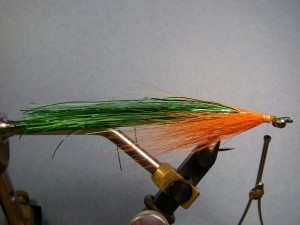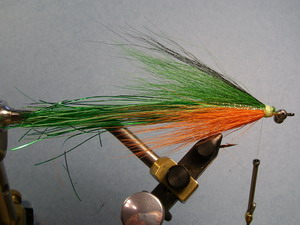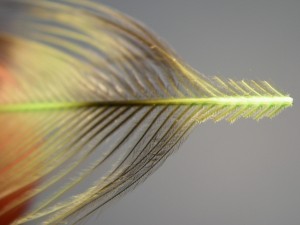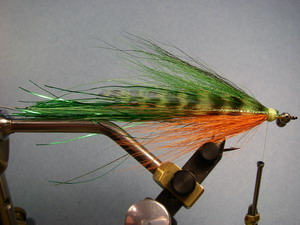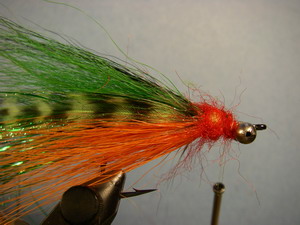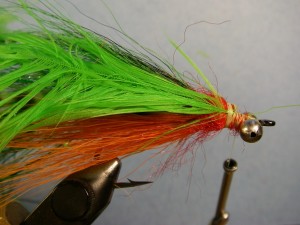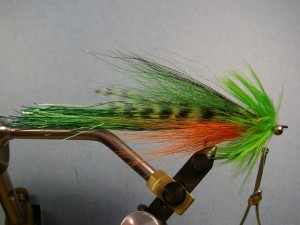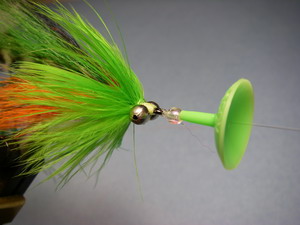Swinging flies for steelhead is becoming more popular with anglers using two-handed switch and spey rods. While the classic wets and “spey” style flies catch fish, patterns that are closer to streamers have proved effective. These larger patterns can bring a little more attention to themselves as they swim through an expansive run or in dirty or stained water. A rabbit strip leech or swing leech is about as basic as it gets for a pattern of this nature offering a good profile, action/moment and a proven track record.
Anglers that swing or strip streamers often complain that fish nip at the tail, missing the hook. This pattern places the hook near the end of the tail by using a loop of Berkley Fireline. This has three distinct advantages: 1. allows you to replace the hook in the event that it dulls or becomes bent further extending the life of the fly; 2. places the hook at the back of the fly where “nipping” fish will find it; and 3. eliminates the fouling of the long tail around the hook bend. This method/design works well with a number of streamers – try incorporating a loop in your fly patterns.
This pattern is only an example of one of the potential color schemes you can try. Try different color rabbit strips (browns, olive, white or black), ice dubs, collars, etc. to meet your needs and desires and fully make your fly box versatile by using various sized eyes for different conditions – from lead eyes to bead chain.
Recipe
Shank: Mustad 3366 2/0
Rear Hook: Gamakatsu Octopus or Drop Shot
Thread: Fly Master Plus – Black
Tail: Black Rabbit Strip
Tube: Black Tube
Body: Black Rabbit Strip
Collar: Black Schlappen
Wing: Flashabou – Black Holographic
Dub: Ice Dub – Peacock
Tying Instructions
Step 1. Insert hook in vise jaws and add a base layer of thread from behind hook eye to above barb.
Step 2. Cut a section of 20# Fireline – approximately 7 inches and fold in half. The loop end should extend off the back of the hook at a distance that meets your fly size needs – this example will extend two inches.
Step 3. Wrap the Fireline on top of the hook shank with tying thread. Place cut ends
of Fireline down through the hook eye and along the underside and wrap some
more. Whip finish and tie off. Apply a coat of Zap-A-Gap to secure and allow to dry.
Step 4. Using a tube fly vise or adapter, tie a 1/4 inch section of tube to the end part of your rabbit strip.
Be careful you don’t wrap over the rabbit hair but only over the pelt itself. Tie off.
Step 5. Start thread behind hook eye and wrap back to where previous wraps are.
Tie in Rabbit strip so the Fire Line loop goes through the tube and extends where
the pelt of the rabbit strip extends to the end of the loop. Do not trim Rabbit.
Step 6. Take remaining rabbit and wrap along hook shank towards hook eye,
sweeping rabbit hair backwards. Stop about 1/2″ behind hook eye.
Step 7. Figure-8 the eyes on the bottom of the shank so that the rabbit fur strip remains up.
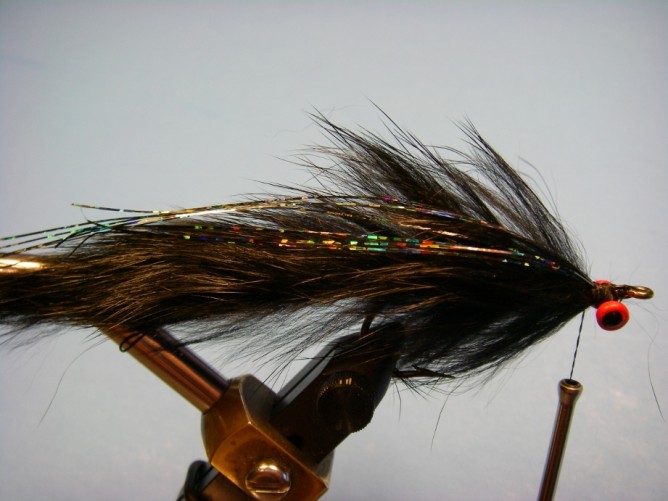 Step 8. Tie in Flashabou wing with staggered ends without any strands extending beyond the rabbit.
Step 8. Tie in Flashabou wing with staggered ends without any strands extending beyond the rabbit.
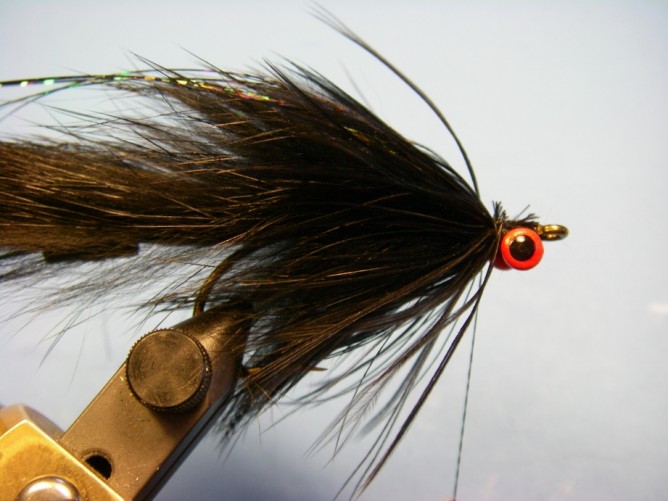 Step 9. Wrap the schlappen forming a shoulder on the fly.
Step 9. Wrap the schlappen forming a shoulder on the fly.
Step 10. Take a clump of ice dub and place it on top of the hook extending
backwards a little bit. Dub the rest of the head loosely and pick out.
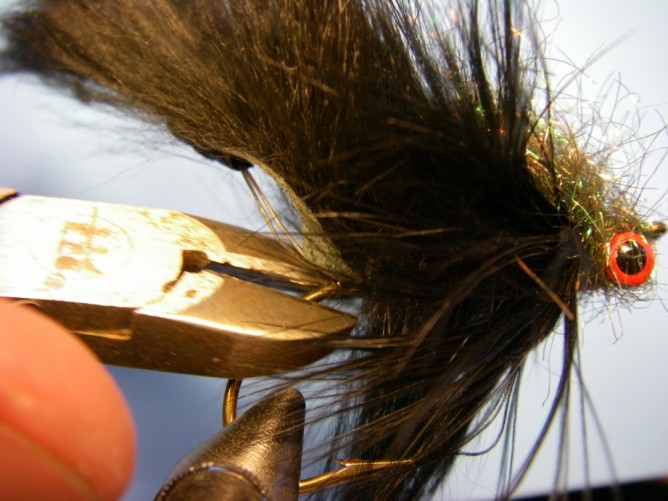
Step 11. Whip finish and cut line. Using side cutters, cut the bend off the hook.
Thread the Fireline loop through the piece of tubing attached to the rabbit and attach
a hook by pushing the loop through the hook eye and over the hook then drawing tight.
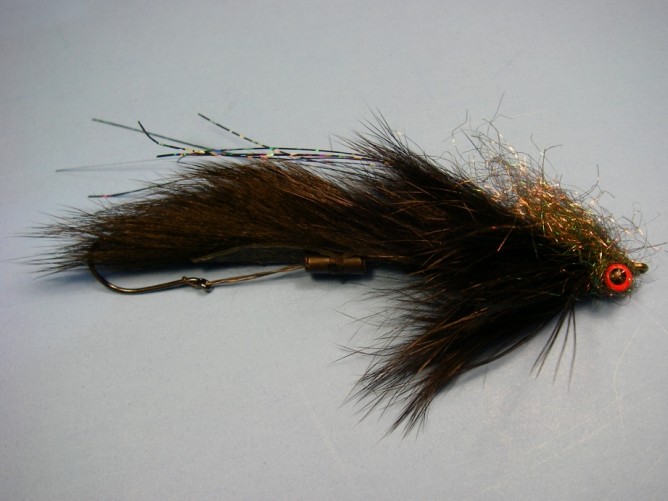
Finished Rabbit Strip Swing Leech
Notes: Tie up a few shanks with Fireline loops during one session to speed up the process.

